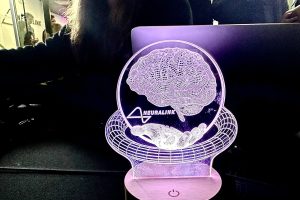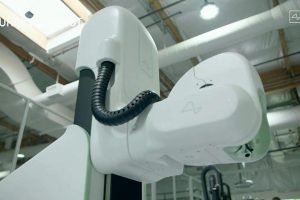- 🧠 Alex, Neuralink’s second patient, successfully connected the Link device to his computer and controlled the cursor with his mind in under 5 minutes.
- 🏆 Alex broke the world record for BCI cursor control on his first day using the Link device.
- 🎮 He independently tested the implant by playing Counter-Strike 2 and designing 3D objects using CAD software.
- 🖨️ Alex designed and 3D-printed a custom mount for his Neuralink charger using Fusion 360, demonstrating his revived passion for building.
- 🔧 Despite a spinal injury, Link allows Alex to continue performing tasks he enjoys, similar to his previous work as an automotive technician.
Understanding Neuralink’s Link Device
What is the Link Device?
Neuralink’s Link, a brain-computer interface (BCI) device, is designed to establish a direct line of communication between the brain and external digital systems. This groundbreaking technology aims to restore autonomy to individuals with disabilities and enhance human capabilities by leveraging sophisticated neural engineering.
How Does Neuralink’s BCI Work?
The Link device operates by detecting neural signals and converting them into digital commands. This flawless synergy between biological and mechanical systems permits users to control electronic devices merely with their thoughts. In Alex’s case, this has enabled extraordinary feats, such as intuitive cursor movement on a computer screen, achieved in less than five minutes during his initial session.
Trailblazing Achievements
- Record-Breaking Performance
- On his very first day with the Link device, Alex exceeded previous benchmarks, setting a new world record for BCI cursor control using this advanced technology. This milestone underscores the device’s potential to redefine interaction paradigms.
- Gaming Meets Brain-Computer Interface
- Venturing into new territories, Alex has successfully employed Link to navigate the dynamic and fast-paced world of Counter-Strike 2. This not only highlights the gaming applications of BCI devices but also paves the way for immense possibilities in virtual reality and interactive media design.
The Intersection of CAD Technology and BCI
Empowering Creativity through Technology
Alex’s story is particularly inspirational due to his remarkable foray into design and fabrication, showcasing how CAD software and 3D printing technology can be integrated with BCI devices:
- Fusion 360 and Custom Solutions:
Within a brief span post-implantation, Alex utilized Fusion 360, a robust CAD software, to create a custom mount for his Neuralink charger. This process was not just about creating a device support but rediscovering an innate passion for building and innovation, traits he honed as an automotive technician before his spinal injury. - From Concept to Creation:
The seamless journey from a digital idea to a fully realized physical object underlines the transformative impacts of BCI combined with modern design tools. This capacity empowers individuals to execute complex tasks autonomously, turning creative visions into real-world items.
Implications of Neuralink in Medical Technology
Beyond Current Boundaries
The broader implications of Neuralink’s advancements in medical technology are profound. BCIs like the Link have the potential to revolutionize rehabilitation, offering a renewed sense of purpose and capability to individuals with spinal injuries or neurological conditions. Possible future applications could include:
- Enhanced Communication:
For patients unable to communicate through conventional means, BCIs could offer a new pathway to express thoughts and desires, improving quality of life significantly. - Improved Mobility and Autonomy:
Neural interfaces may one day control assistive devices or prosthetic limbs with precision, enhancing independence for users with mobility challenges.
Conclusion
Alex’s journey reminds us of the limitless possibilities when humanity and technology coalesce. His achievements with Neuralink’s Link device reflect a future where technology not only augments human capability but also uplifts the spirit—it reiterates hope to those who seek it desperately and showcases the potential symbiosis between human creativity and machine intelligence.





